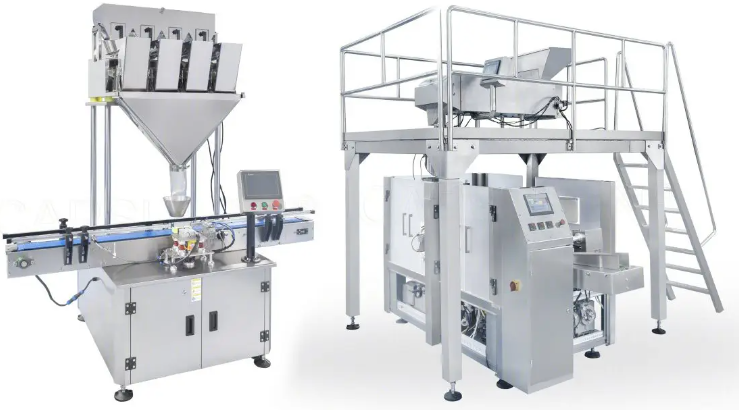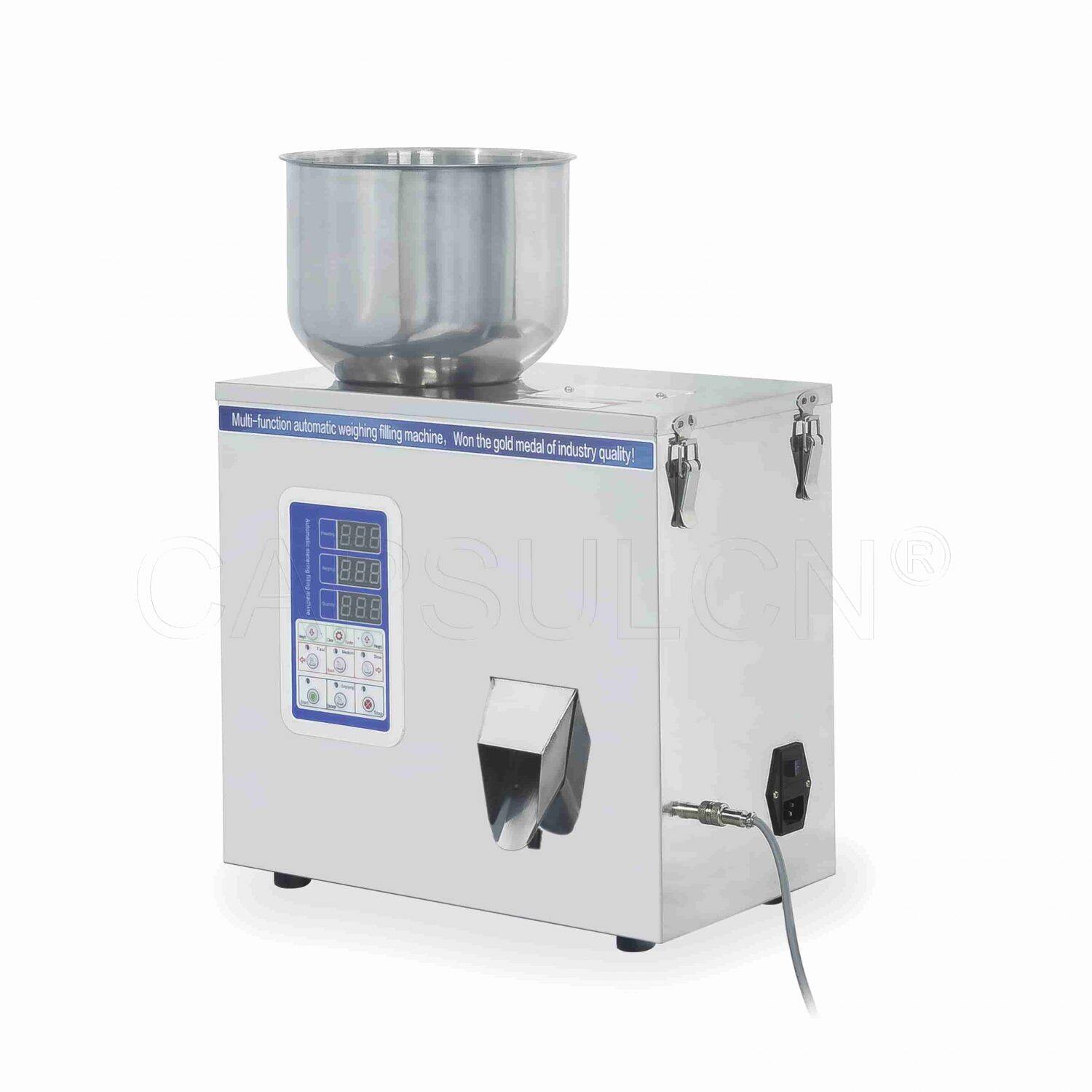As a popular supplement, protein powder is widely used among fitness and sports enthusiasts. It helps add extra protein to the diet for building muscle or weight management. Protein powder is usually made from whey, casein, soy, pea, etc. Manufacturers use containers such as plastic tubs and resealable bags to hold them. They help preserve freshness and allow for easy storage and transport. So, a protein powder filling machine is key in the process. If you want to be involved in this business, you'll need more information.
What Is A Protein Powder Filling Machine?
This equipment is designed to package protein powder efficiently and accurately into containers like bottles, jars, bags, or sachets. It can handle fine powder materials and ensure precise filling by measuring exact amounts for each container. There are many types of powder fillers on the market to package protein powder. But you should choose ones that have precise measuring tools, like a screw measurement system. Some simpler or cheaper powder filling machines might not have these features.

Automatic protein powder fillers operate at high speeds, allowing for rapid filling of containers without sacrificing accuracy. If you use fully automatic models, labor costs could be greatly reduced. It could also minimizes the risk of human error, further enhancing overall efficiency. So you can focus on other important aspects of production, such as quality control and packaging.
In addition, it often incorporates dust control systems to reduce airborne particles during the filling process. This is particularly important when dealing with fine powders like protein. Because powders can create a messy and potentially unsafe environment if not managed properly. Effective dust control not only protects the health of operators but also helps to keep the production area clean.
Five Common Types of Filling Equipment for Protein Powder
To save your time, here are 5 common models to choose from. You can pick the one that best fits your production needs.
Auger Filling Machines
These machines are mainly equipped with a hopper and an auger screw. The auger moves powder from the hopper down into containers like bottles when rotating. The amount of powder dispensed is controlled by adjusting the auger’s rotation speed, duration, or number of rotations. In fully automated models, a conveyor moves containers into position under the nozzle. So they can receive the correct powder dosage. Automatic types are often part of an entire production line. They can integrate seamlessly with conveyors, capping machines, and labeling systems. This greatly improves the output and efficiency. But this type also requires high cost. If you run a small business, manual or semi-automatic models may be better.
Moreover, auger fillers support customization, including screw sizes, filling nozzles, and hoppers for specific powder types and fill volumes.
Gravity Fillers with Vibratory Feed
This is a volumetric filling machine that uses gravity and a vibrating part to control how the powder flows. This setup improves filling consistency and accuracy. During production, gravity moves the powder from the hopper into the container, and the vibration helps the powder flow smoothly and continuously. The vibration also stops the powder from clumping. It keeps the flow steady. Without vibration, some powders might get packed tightly in the hopper, causing uneven fills or even stopping the flow.
In most cases, gravity filling machines adjust the hopper’s opening to measure the required amount. Once the target volume is dispensed, a cutoff mechanism stops the flow. This cutoff can be a gate or valve that closes to prevent excess product from entering the container. In automated systems, sensors may detect the container’s fill level. It is able to signal the machine to stop dispensing.
Gravity fillers work best with powders and granules that have natural flow properties. When processing with protein powder, it needs to be agitated for more easily flowing. Gravity fillers feature easy design and use. They can achieve high filling speeds, ideal for large-scale production.
The two protein powder fillers above are divided based on filling technology. Next, I will introduce types that combine filling and packaging technology.
Vertical Packing Machines
This equipment is used a lot for filling and packing protein powder. It works well for different kinds of products, like powder, granules, and liquids. It is equipped with a film-rolling system. The machine pulls the film to make a tube shape for filling the product. The bottom and sides of the film would be sealed by heat or cold sealing, leaving an opening for filling. The machine then moves the powder from a hopper onto the packaging film according to the set fill amount. Once it reaches the needed weight, the machine cuts and seals the bag. Vertical packaging machines can handle many types of bags, like single bags, double bags, combo bags, etc.
Granule Weighing and Packing Machines

This machine could be equipped with auger filling or vibratory feeders for feeding powders. It uses precision load cells or scales that accurately measure the weight of the granules. Depending on the design, the weighing process can be continuous or batch-based. In batch weighing, the machine stops to allow for accurate measurement before proceeding. Once the desired weight is achieved, the machine dispenses the granules into pre-formed bags or containers. The bag forming process is similar to when using vertical packing fillers.
Rotary Pouch Sealing Machine
This machine is suitable for both medium and large-scale protein powder packaging. During processing, pouches go into the machine’s magazine first. A feeder then places each pouch onto the rotary belt. Next, grippers hold the pouches as they rotate, and an air blower or vacuum opens the pouch mouth for filling. In some machines, air is also removed in this stage to help the powder settle. Then, the machine seal the top of the pouch to protect it from moisture and contamination. Finally, the sealed pouch cools slightly and exits onto a conveyor or collection area.
How to Choose A Protein Powder Filling Machine?
Container Types
Protein powder is packed in different container types like jars, tubs, bags, sachets, and bottles. Each type needs different machine features. Jars and tubs are strong and good for big amounts of powder, so machines need wide nozzles to fill them without spilling. Bags and sachets are light and single-use, so machines often have heat sealers to keep the powder fresh. For bottles, they always need narrow nozzles to fill them properly. You’d better decide which packaging type your products need, and then pick a right machine.
Durability
A protein powder filling machine is a long-term investment, so durability is important. High-quality materials make the machine last longer, and the structure should be strong enough for long hours of use. Parts can wear out, so it’s best to choose high quality materials. In addition, you should consider if machines are easy to clean. It helps keep safety and reduce cleaning time.
Budget
Budget is a significant factor when investing in any production equipment, including filling machines. It’s essential to balance cost with the level of automation and efficiency the machine can offer. Also, think about maintenance and running costs. Some machines have more durable parts and need less maintenance, which can save money over time.
The End
Protein powder fillers play a significant role in the formulation and marketing of protein supplements. If you know clearly their types and purposes, you can make a wiser choice about machine selection.